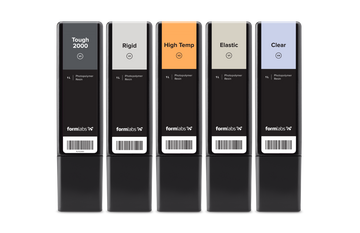The Role of Cutting Guides:
Cutting guides are specialized tools designed to help surgeons make accurate cuts and alignments during surgery. They are customized for each patient, taking into account the specific anatomy and surgical requirements. The use of cutting guides increases precision, reduces operation times, and minimizes the risk of complications. In complex surgeries, cutting guides provide an additional level of guidance, ensuring that the surgeon follows the planned surgical path and avoiding potential damage to critical structures.Why ISO Biocompatible Materials Matter:
ISO biocompatible materials are essential in the production of cutting guides. These materials are safe for use in the human body and are less likely to cause adverse reactions. They are tested and certified to meet strict international standards, ensuring the highest level of safety and reliability. Using ISO biocompatible materials in the manufacturing of cutting guides guarantees that the tools are both effective and safe for patients.The Benefits of 3D Printing:
3D printing has transformed the production of surgical cutting guides, making it faster and more cost-effective. This technology allows for rapid prototyping and customization, which means that surgeons can have access to patient-specific cutting guides within a shorter time frame. Additionally, 3D printing enables the production of complex designs that would be difficult or impossible to create using traditional manufacturing methods. This results in better fitting and more accurate cutting guides, further enhancing the precision and safety of surgical procedures.Formlabs' Cutting-Edge Solutions:
Formlabs, a leading 3D printing company, offers a range of ISO biocompatible materials for the production of surgical cutting guides. Their materials, such as Dental SG and Dental LT Clear, are engineered to provide optimal performance, durability, and safety. Formlabs has also developed advanced software, like PreForm and Form Wash, that streamlines the design process, making it easier for medical professionals to create customized cutting guides.The Impact of Patient-Specific Cutting Guides:
Patient-specific cutting guides are a significant advancement in surgical planning and execution. By creating cutting guides tailored to an individual's anatomy, surgeons can perform more precise and less invasive procedures. For example, in the case of a patient requiring a total knee replacement, a cutting guide can be designed to perfectly align with the patient's unique bone structure, ensuring accurate positioning of the implant.This level of customization has been shown to improve patient outcomes, as it can lead to faster recovery times, reduced pain, and a lower risk of complications. Furthermore, patient-specific cutting guides enable surgeons to perform surgeries with a higher level of confidence, as they can rely on the accuracy and precision of these custom-made tools.




